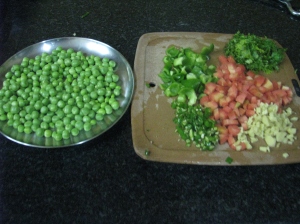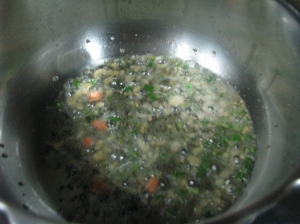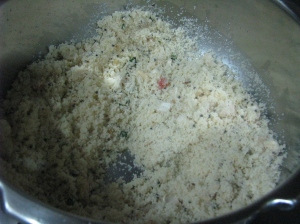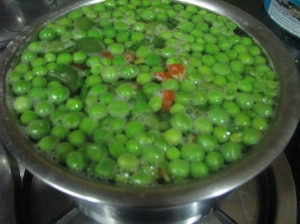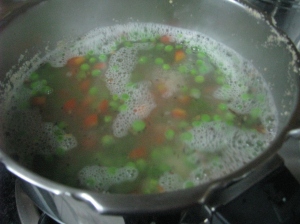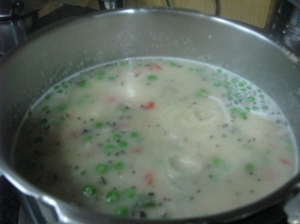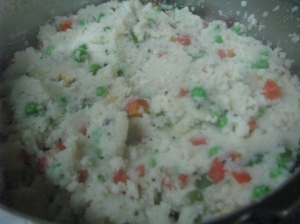In olden days, there were four caste existing.
They are Brahmins, Kshatriyas, Vaishyas and shudras. This classification was based on the mind set.
Brahmin is a person who is supposed to have 85% satvik mind, 10% rajasic and 5% tamasic. All human beings will have all 3 states of mind.
A Kshatriya will have more rajasic quality of mind. Shudras will have more tamasic quality of mind.
But in no way a satvik mind person is superior than the tamasic mind person because even a person with tamasic mind can become rajasic and finally satvik.
“janmana jayate sudrahsamskarad bhaved dvijah
veda-pathad bhaved vipro
brahma janatiti brahmanah”
(By birth one is a sudra, by the purificatory process one becomes a dvija, by study of the Vedas one becomes a vipra, and one who knows Brahman is a brahmana (brahmin.)
The classification is done to choose the profession. Say a brahmin will only learn and give the knowledge to others. He has knowledge but will not have the weapons and money. He will take bhiksha (Bhiksha is food obtained by asking for alms) from people for his living and will not accumulate wealth.But a kshariya will have weapons and wealth but he needs an adviser for the actions. Basically, they did not want all the elements (wealth, knowledge and weapon) to be in the hands of one person.
A person who is born in the brahmin family is given the purification bath “uppanayanam” – dvija. All the human beings born is a shudra (tamasic mind predominently) and because of the purification bath he is considered twice born. Uppanayanam is formal ceremony conducted to convey that the person is eligible to read and study the sacred books.
This ceremony can be done even for the other castes like Kshatriyas and Vaishyas.
Persons like sage Vyasa, Sage Valmiki, Sage Vidura are all born in a low caste and have become eminent sage.
Another example is Drona born is a brahmin family became a shatriya and fought in the Mahabharatha war.
So, nobody is superior by birth.
It is your actions which make a person superior or inferior.
Unfortunately, this is not understood by many.
The brahmins blindly follow these rituals as they are carried out for ages. Without no respect as to why these are done.
The purification bath (Uppanayanam ) is given to the brahmin boy who has no intensions of reading the scriptures.
Having a kudumi (small hair) at the back symbolices that he has shaven all the vasanas (desires) and he has a little vasana i.e the desire to know the Brahman.
The coconut is broken for all the religious rituals. Why? Look at the coconut – it has a smooth skin and inside is entangled with fibre representing the vasanas. Traditionally all the fibre is removed and a small portion is kept called the kudumi. Before breaking it the pandit removes the kudumi and then the 3 eyes are visible i.e the third eye is opened ( no third eye comes on the forehead it is symbolically mentioned that the person looks at things with a new perspective – new eye) and breaks the coconut (hard shell is the EGO of I – this is broken). Then the pure coconut is seen. Similarly, we need to remove all the vasanas and have the little desire to know the Brahman. Then, if we go to the guru he will remove this small vasana and show us the ultimate Brahman. Whenever we break the coconut – we need to remember this.
Why 3 layers of vibhudi (ashes) is applied on the forehead?
The layers represent the 3 states of mind. These are symbolic representations to remind us; our aim of life is to know the Brahman by conquering the mind.
Only human beings have the capability to understand the ultimate Brahman. This is the purpose of our life.
Let us get any number of Phd degreee – we will not be satisfied with the knowledge gained till we get the knowledge of Brahman. For this we need to develop the intellect. Only with a better intellect we can perceive these things.
So read the scriptures to strengthen the intellect.
Don’t feel superior because of the birth in a Brahmin family. I am not saying that don’t follow the symbols; I am just saying that follow it with understanding. It is not wise to force people to follow these symbols when they are not adhering to any of the purpose.
This is my thought. You use your intellect and analyse it.
It is like this. When I started with yoga and meditation. I wrote an article on the net within one month of starting. I wrote the article around 12 noon and by 5 pm I got 28 responses.
Today, when I read that – I find it so stupid. But there are lots of beginners who liked it at that time. Similarly, my article will be appealing for the beginners and many scholers might find it stupid.
I feel normally people start preaching after they become scholars. None of the people are having the mind set. So they hardly understand and they consider him mad.
So, I feel it is important to convey your understanding and opinions. If it is understood by a person he will take it and think about it.
When I started reading -there was hardly any writing about the scriptures on the net. Now, in few years I see many of them writing and expressing their views. Many consider it dangerous as it might mislead the community. But I feel it is healthy and it is making people think in a different direction.
So may be we can do the “Uppanayanam” ceremony for the Brahmin boy provided the parents are also reading some scriptures and having a better intellect to guide the child.
Atleast the father should start the sandhya vandanam and gayathri mantra (this is only a beathing (pranayam) and mantra meditation). This will lead to better intellect. Then, if we start reading the scriptures we can understand and ask the next generation to follow or we can convince the next generation that we lost this tradition and request them to start it all over again.
But this may not be possible in the child hood. We have lost the tradition. No need to worry and cry about it. Slowly slowly, we will bring back the tradition.
We can also read the scriptures, do the breathing exercise and mantra meditation even without the purification bath (Uppanayanam). Who is stopping us?
Lets start to think……the solutions will come automatically……………………………….
Don’t be proud of your birth do the actions which will make you proud………………….
Don’t suppress or control the desires thinking that you are removing it. Don’t impose it on others. All these refers to self control. Because we feel reading scriptures is good we cannot switch of the TV of people who are watching it and preaching them about the knowledge. If we like it – let us do it. The others will see the change in us and will slowly slowly follow us.
Normally, it is human nature to advise others to follow the knowledge that we gained. But we need to take conscious effort not to preach and just follow it with ease. I feel these days internet is such a useful media that we can express all the advises and preaching in this and revealed of the human nature. Of course, in this process we will be able to judge how much we know and people interested will visit and read………
Lets make a beginning to change the mind set……………………..
